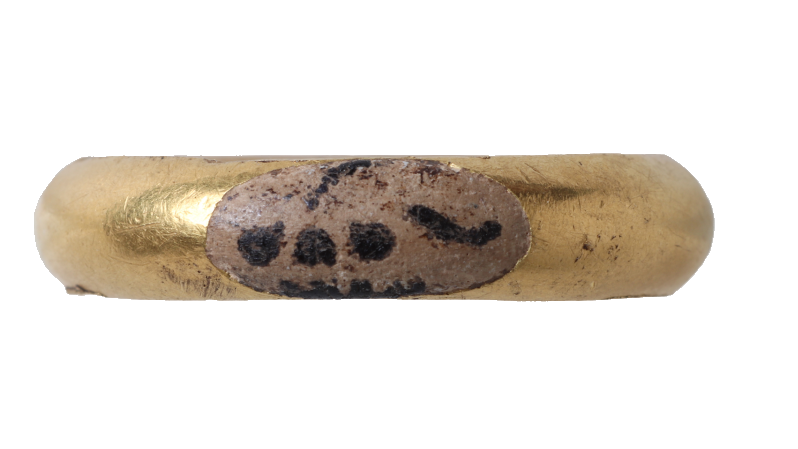
An amateur metal detectorist in Norfolk, England, has uncovered a fascinating piece of history: an 18th-century gold mourning ring adorned with an enamel skull. The discovery, made by Malcolm Weale, has captivated historians and jewelry experts alike, offering a glimpse into the past.
The ring, found in a field on England’s east coast, is linked to Sir Bassingbourne Gawdy, 3rd Baronet of Harling. It bears an inscription on the inside reading “B.G. Bart. ob: 10. Oct: 1723. aet: 56,” which translates to “B.G. Baronet, died 10 October 1723, aged 56.” This suggests it was created to memorialize the baronet, who tragically died in a hunting accident.
A Dance of Discovery
Upon unearthing the ring, Weale expressed his excitement, telling the BBC, “I knew this was something very special and I did a bit of a dance.” The ring, found in August, has since been examined by experts through the U.K.’s Portable Antiquities Scheme at the British Museum.
Featuring a thick, D-shaped cross-section, the ring’s exterior showcases an oval depression filled with jewelry enamel, a technique involving fusing powdered glass or ceramic at high temperatures. The result is a striking skull design against a grayish background, crafted with black spots and lines.
Historical Context and Significance
Mourning rings, often inscribed with the Latin phrase “memento mori” or “remember that you will die,” were popular in England from the 16th century through the Victorian era. These pieces served as reminders of mortality and were typically worn by those grieving the loss of a loved one.
The Gawdy ring, however, stands out as a late example with an unusual design. Unlike typical mourning rings of its time, which often featured engraved skulls filled with enamel, this piece boasts a large depression enameled in two colors. This unique design has piqued the interest of historians and jewelry experts.
“It’s very rare to put a name to anything you find,” Weale noted. “But I knew this was something very special.”
The Mystery of the Ring’s Origin
Despite its historical significance, the ring’s origins remain somewhat of a mystery. The maker’s mark, which appears to read “TU,” does not provide additional insight into the artisan responsible for its design. Furthermore, historical records indicate that Sir Bassingbourne Gawdy died unmarried, leaving questions about who commissioned or wore the ring.
Based on measurements from the British Museum, the ring is roughly a U.S. size 6 or 7 (U.K. size L to N), suggesting it may have been intended for a woman or a teenager. This adds another layer of intrigue to the artifact’s history.
Legal and Cultural Implications
As the ring is made of gold and over 300 years old, it falls under the U.K.’s Treasure Act of 1996. This legislation allows museums to acquire such artifacts, with the finder and landowner eligible to share in any rewards for turning it in. The discovery highlights the ongoing cultural and historical significance of metal detecting in the U.K.
This development follows a series of remarkable finds by metal detectorists in recent years, underscoring the potential for uncovering hidden treasures that offer valuable insights into the past.
As this story unfolds, experts continue to study the ring, hoping to unravel more of its secrets and shed light on its enigmatic past. Meanwhile, the discovery serves as a poignant reminder of the rich history buried beneath our feet, waiting to be uncovered by those with a keen eye and a passion for the past.






